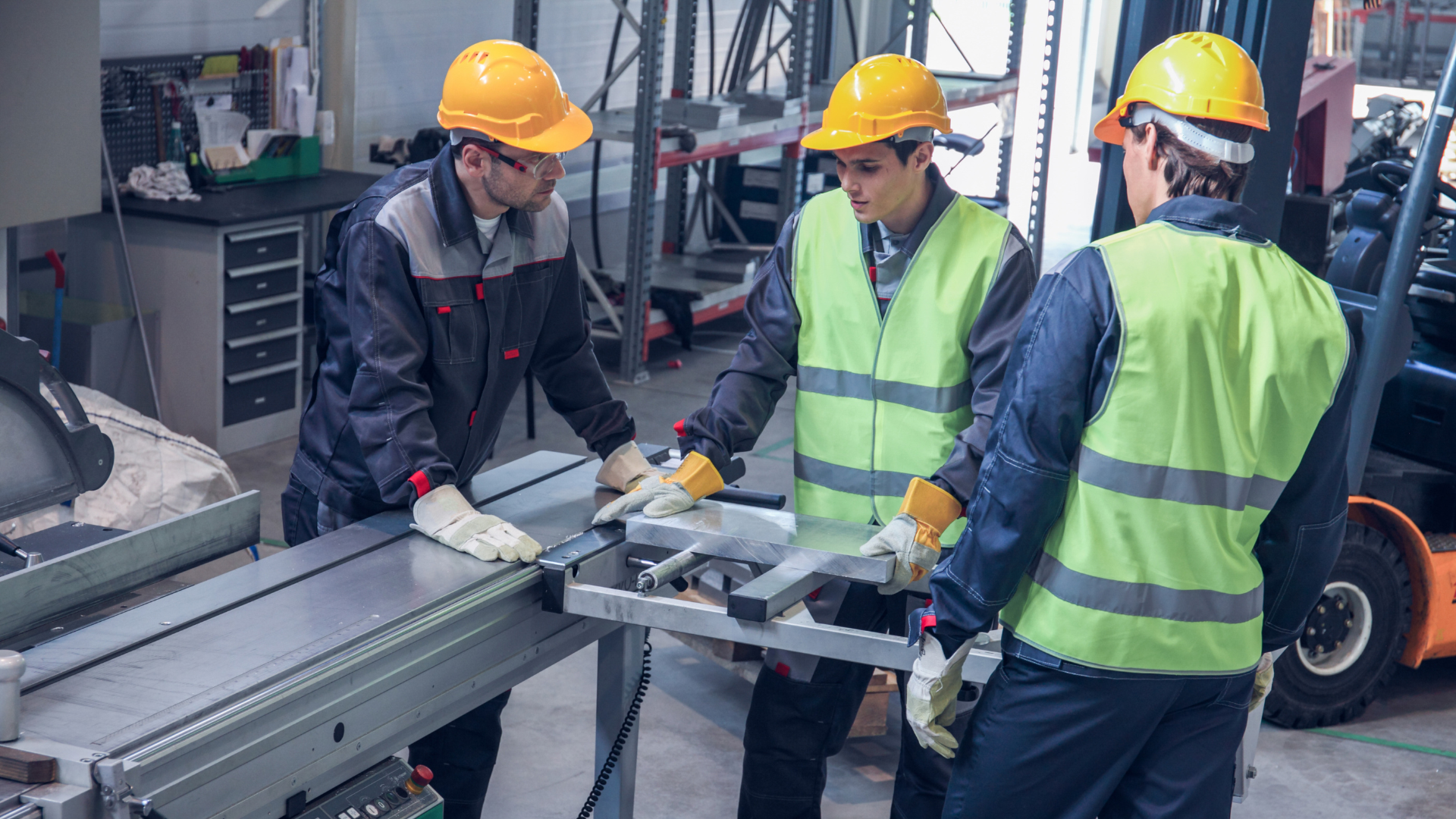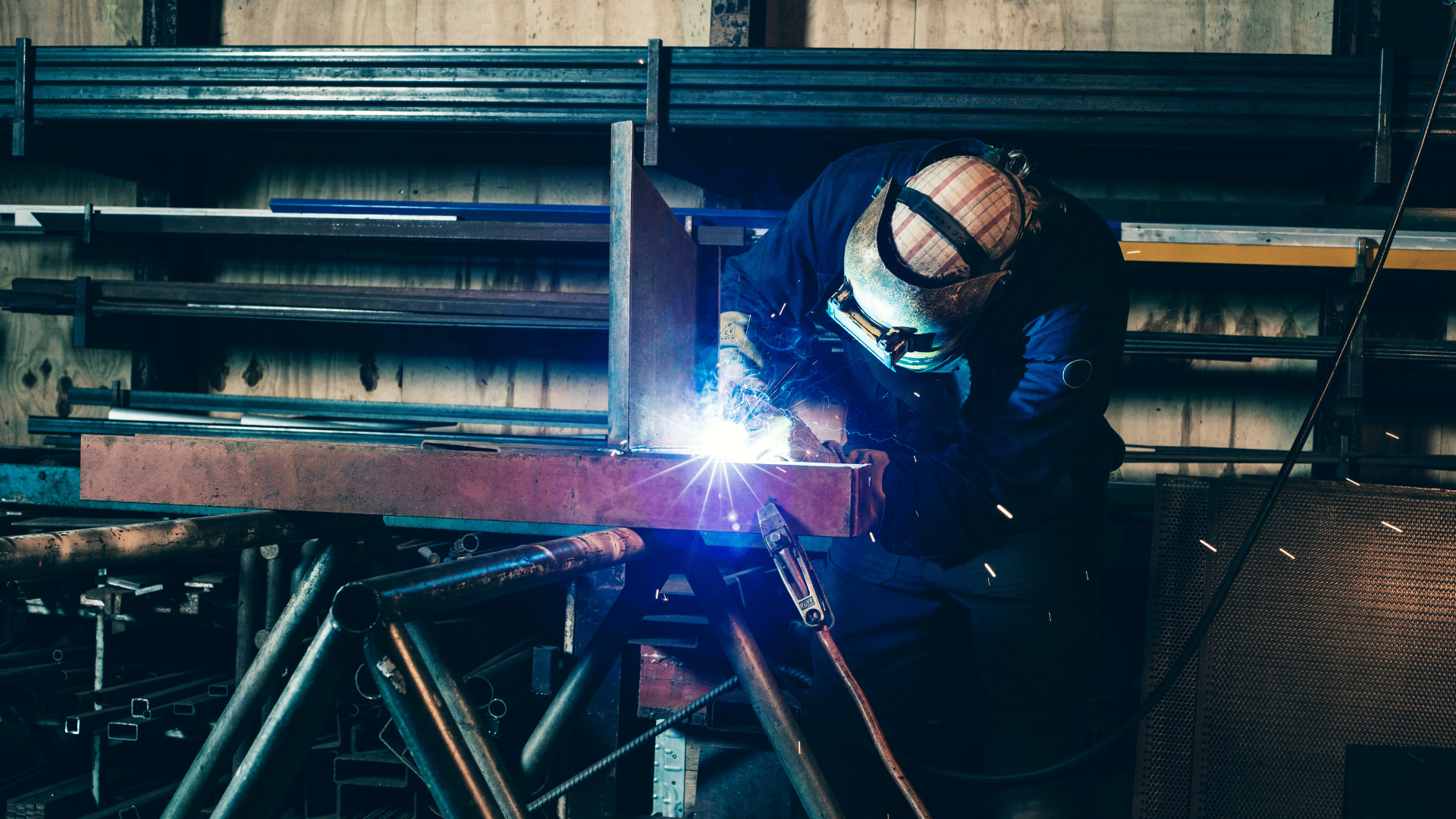In modern manufacturing, the terms machine shop and fabrication shop are often used interchangeably. Both work with metal, both rely on advanced equipment, and both transform raw materials into usable components. Yet, the difference between them is fundamental; one cuts away material with precision, while the other forms and assembles it into larger structures.
This confusion often arises because many finished products require both disciplines. A fabricated metal enclosure may need machined holes or precision mounting points; a machined assembly may rely on fabricated brackets or frames to support it. For engineers, procurement managers, and OEMs, knowing the distinction isn’t just academic; it can determine project cost, lead time, and long-term reliability.
Understanding whether your project requires a machine shop, a fabrication shop, or both ensures you select the right manufacturing process from the start. This article explains how each works, where they overlap, and how combining both can yield stronger, more economical results.
What Is a Machine Shop?
Before digital manufacturing, machinists relied on manual lathes, mills, and drill presses to shape metal by hand. Today, those tools are controlled by computer numerical control (CNC) systems, which translate digital CAD files into automated tool paths that cut with micrometer precision.
The result is a process capable of achieving tolerances as tight as ±0.0005 inches, a level of accuracy unmatched in most other manufacturing disciplines.
A machine shop specializes in subtractive manufacturing, meaning material is removed from a solid workpiece, typically metal, though sometimes plastic or composite, to create a final shape.
Common operations include milling, turning, drilling, threading, and grinding. Each uses a different approach to remove material efficiently while maintaining surface finish and dimensional accuracy.
Typical outputs of a machine shop include:
- Precision shafts, bushings, and fasteners
- Custom housings for electronics or optics
- Tooling, dies, and molds
- Components for medical, aerospace, and defense applications
Because of its accuracy, machining is often used to create critical interfaces, such as bearing seats, sealing surfaces, or precision slots that dictate how parts fit together.
In industries like aerospace or medical devices, even a fraction of a millimeter off spec can compromise performance, which is why machine shops play a vital role in quality-sensitive manufacturing.
For an example of how advanced CNC systems are applied in real-world production, see DureX’s CNC machining services in NJ, which showcase how precision cutting and automation deliver consistent quality at scale.

What Is a Fabrication Shop?
A fabrication shop operates on the opposite principle. Instead of removing material, fabrication forms, cuts, and assembles it into structures or enclosures.
Fabricators work with sheet metal, plate, or tubing, shaping it through bending, welding, and joining rather than milling or drilling away material.
Fabrication shops are the backbone of structural and mechanical production. They use equipment like laser cutters, press brakes, MIG and TIG welders, and finishing systems to create everything from machine frames and HVAC enclosures to electrical panels and protective housings. The emphasis is on form, strength, and durability, not micron-level precision.
Typical fabrication processes include:
- Cutting metal sheets or bars to size using CNC lasers or plasma systems.
- Forming parts through press brakes or rolling machines.
- Welding and joining components into assemblies.
- Finishing through powder coating, painting, or anodizing.
- Assembly of hardware or electrical components.
Fabrication shops serve industries such as construction, automotive, food service, and industrial equipment manufacturing, where performance under load and resistance to wear matter most.
To explore fabrication methods and capabilities, visit DureX’s page on sheet metal fabrication in NJ.
How Fabrication Evolves with Production Volume
In fabrication, the tooling strategy evolves as production volume grows. Early in a product’s life cycle, manufacturers often rely on soft tooling, inexpensive, quick-to-produce dies and fixtures made from materials like urethane or mild steel. Soft tooling is flexible, ideal for prototypes or small batches where design changes are likely.
However, as demand increases, the cost of maintaining soft tools outweighs their convenience. They wear quickly, reducing consistency and increasing setup time. This is where hard tooling becomes essential.
Built from hardened steel or aluminum, hard tools can last through hundreds of thousands of cycles, offering superior accuracy and throughput.
Industry experts such as VEM Tooling and RCO Engineering emphasize that this transition marks a critical economic threshold. Soft tooling supports early-stage flexibility, while hard tooling enables sustainable production efficiency.
For instance, a low-volume prototype enclosure may be cut and bent using soft tooling, but once demand reaches thousands of units, investing in a hardened die cuts the cost per part dramatically and boosts turnaround speed.
This shift illustrates how fabrication scales seamlessly from concept to mass production. Manufacturers can adapt to market growth without redesigning components, simply by upgrading tooling and processes. That scalability makes sheet metal fabrication a cornerstone of modern product development.
For further industry guidance, see VEM Tooling’s overview of fabrication methods in manufacturing.
Core Differences Between Machine Shops and Fabrication Shops
While both involve metalworking, machine shops and fabrication shops differ in almost every technical respect, from process type to design philosophy, cost model, and industry application. Understanding these contrasts helps decision-makers choose the most efficient approach.
Machining focuses on dimensional precision, while fabrication prioritizes form and structure. Both rely on craftsmanship and technology, but they solve different engineering problems.
The following distinctions illustrate where each process excels and where overlap occurs.
Process Philosophy
Machining is a subtractive process, using cutting tools to remove material and achieve exact geometry. Every pass of a cutter, drill, or mill refines the part’s dimensions.
Fabrication, conversely, is formative or additive, transforming flat or linear stock into assembled components through shaping and joining.
A machined part achieves its shape by material removal; a fabricated part achieves it through deformation and welding. Both can reach high precision, but machining dominates where microns matter.
Material Forms and Input Types
Machine shops start with billets, bars, or castings. Fabricators begin with sheet metal, tubing, or extrusions. This difference dictates not only part geometry but also scale. A machined component might fit in your hand, while a fabricated structure could fill an entire factory floor.
Machinists are experts in tool paths, feeds, and speeds; fabricators master fit-up, welding technique, and structural alignment. Both require precision, one measured in thousandths of an inch, the other in degrees and deflection under load.
Equipment and Expertise
Machine shops rely on CNC mills, lathes, and grinders to carve material with tight repeatability. Fabrication shops employ laser cutters, press brakes, welders, and automated finishing lines.
The expertise also differs. Machinists interpret G-code and metrology data, while fabricators focus on joint design, weld penetration, and metal forming limits.
Together, they cover the entire spectrum of precision and production, one for intricate parts, the other for robust assemblies.
Design Tolerances and Quality Standards
Machined parts often require tolerances of ±0.001 inch or tighter, essential for gears, bearings, or sealing interfaces. Fabricated components, by contrast, typically maintain ±0.010 to ±0.030 tolerances, which are sufficient for welded or bolted assemblies.
As the Society of Manufacturing Engineers (SME) explains in its training materials, these tolerance zones reflect each process’s purpose.
Machining ensures precision fit; fabrication ensures dimensional stability and strength. A design engineer should always match tolerance requirements to the manufacturing process to avoid unnecessary cost.
Cost Dynamics
Machining carries higher per-part costs due to slower cycle times and tool wear, but it requires little upfront investment. Fabrication becomes more cost-effective as volume increases, since tooling and setup costs are amortized across many parts.
Real-world examples published in Industrial Machinery Digest demonstrate that transitioning from fabricated sheet metal to stamped or machined hybrids can cut unit cost by 30–40%.
A tooling investment of $80,000 might pay for itself in a few months once production scales, a testament to how process selection drives ROI.
Turnaround Time and Flexibility
Fabrication setups can change within hours, especially with CNC laser and press-brake programming. Machining takes longer per piece but delivers unmatched consistency for complex geometries.
For prototypes and low-volume work, machining offers agility. For established designs with predictable demand, fabrication provides speed and lower cost.
Industries Served
Machine shops typically serve high-precision sectors: aerospace, medical devices, defense, and electronics. Fabrication shops cater to heavy industry, construction, transportation, HVAC, and utilities.
Each discipline complements the other. Fabrication creates structure; machining ensures precision interfaces that make those structures functional.
How Modern Technology Blurs the Line
In the past, machining and fabrication were seen as completely separate disciplines, one focused on microscopic precision, the other on large-scale assembly. Today, that distinction is rapidly fading.
Advances in automation, digital design, and smart manufacturing have made it possible for a single facility to perform cutting, forming, welding, and machining within one seamless workflow.
As a result, manufacturers can deliver both structural strength and precision fit without transferring parts between multiple vendors.
This shift is driven by the rise of integrated digital manufacturing systems, which synchronize design, production, and inspection data across processes.
A part that starts as a flat laser-cut blank can now move directly into a CNC machining center for finishing, and then into robotic welding or automated assembly, all under the same roof. This not only reduces handling and lead time but also ensures that every feature aligns perfectly with the original CAD model.
This integration offers major advantages:
- Faster production through coordinated workflows
- Improved accuracy when CNC machines finish fabricating parts
- Reduced handling and fewer quality-control checkpoints
- Consistent data from CAD to CAM to inspection
Emerging technologies such as 5-axis machining, robotic welding, and hybrid laser systems make it possible to combine forming, cutting, and finishing in one continuous operation.
As digital manufacturing continues to evolve, the boundary between a machine shop vs fabrication shop is becoming less about separation and more about specialization.
The future of metalworking lies in facilities capable of merging both, delivering the precision of machining and the scalability of fabrication in a unified production environment.

When Do You Need a Machine Shop?
A machine shop becomes essential when precision, alignment, and repeatability determine the success of a part or assembly.
Machining is the process that transforms raw metal into components with exact dimensions, mirror-smooth surfaces, and critical tolerances that ensure proper fit and function.
Whether it’s a rotating shaft, a threaded connector, or a sealing interface, machining delivers the accuracy that other methods can’t achieve.
This process is particularly valuable in industries where safety, performance, and compliance depend on dimensional perfection.
Machine shops are equipped to handle exotic alloys, complex geometries, and fine finishes required for applications like aerospace propulsion, medical implants, and high-speed automation.
When a design demands parts that must look right and perform flawlessly under load, machining provides the level of precision needed.
Common scenarios include:
- Tight-tolerance mechanical parts
- Custom dies or molds
- Aerospace and medical components
- Prototype testing and validation
Machining ensures repeatable, measurable results, making it ideal for components that directly influence performance, motion, or safety.
It also complements fabrication by adding precision features, drilling holes, threading inserts, or surfacing mounts to assemblies that require exact positioning and consistency across every production run.
When Do You Need a Fabrication Shop?
A fabrication shop is the right choice when a project’s success depends on strength, scalability, and structural integrity rather than ultra-tight tolerances.
Fabricators excel at transforming sheet metal, plate, or tubing into assemblies that must withstand vibration, heat, and environmental stress.
From simple brackets to multi-part enclosures, fabrication combines design flexibility with mechanical robustness, making it a cornerstone of industrial and architectural manufacturing.
This process is also ideal when projects require large components or assemblies that can’t easily be machined due to size or geometry.
Fabrication allows engineers to work with a wide range of material thicknesses and configurations, ensuring that the final product meets performance and cost requirements.
Because fabrication methods like laser cutting, bending, and welding can be digitally controlled, they accommodate design changes quickly, an advantage during prototyping or iterative development.
It’s perfect for:
- Frames, brackets, and enclosures
- Industrial cabinets and HVAC housings
- Structural weldments and assemblies
Fabrication provides flexibility across material types and part geometries. Modern CNC-controlled systems enable rapid iteration and precision forming, while automated welding and finishing maintain consistent quality across high-volume production runs. The result is a balance of speed, durability, and design adaptability that machining alone cannot achieve.
When Do You Need Both?
In practice, many engineered products rely on a combination of machining and fabrication to achieve both strength and precision. A single process rarely meets every design requirement, especially for parts that must be both structurally sound and dimensionally accurate.
For example, a fabricated sheet-metal enclosure may require machined holes or cutouts to fit electronics or fasteners precisely.
Likewise, a welded steel frame might need precision-machined bearing housings to ensure perfect shaft alignment. These hybrid builds take advantage of each process’s strengths while minimizing its limitations.
The synergy between machining and fabrication is especially valuable for assemblies that combine form and function. Fabrication provides the foundational structure, frames, panels, or housings, while machining refines critical details like threads, flat surfaces, and mounting features.
By combining the two, manufacturers can achieve high rigidity, clean aesthetics, and seamless integration between components. This blend is often seen in industries like transportation, HVAC, and electronics, where enclosure strength must be paired with precision interfaces.
Beyond performance, hybrid manufacturing also delivers major efficiency gains. When a facility offers both capabilities, parts can move directly from welding to machining without leaving the building.
This reduces handling, transportation delays, and the risk of dimensional variation between steps. Machining stations can even finish fabricated components immediately after forming, ensuring consistent fit and alignment across the entire assembly. The result is faster production cycles, improved accuracy, and lower total cost of ownership for OEMs.
Integrated facilities that combine sheet metal fabrication, CNC machining, and assembly represent the future of manufacturing efficiency.
By streamlining these operations under one roof, manufacturers eliminate the logistical challenges of managing multiple vendors and ensure full quality control from start to finish.
This approach not only enhances performance but also simplifies project management for customers. To learn more about how hybrid production improves outcomes, explore DureX’s custom sheet metal fabrication services.

FAQs
What’s the main difference between machining and fabrication?
Machining removes material with cutting tools; fabrication reshapes and joins material. Machining is about precision, fabrication about structure.
Which process is more cost-effective?
At low volumes, machining may be cheaper due to lower setup costs. At higher volumes, fabrication’s scalability and tooling efficiency reduce per-unit cost.
Can one facility handle both?
Yes. Many advanced manufacturers integrate machining and fabrication to streamline production and maintain consistent quality.
Does machining always make stronger parts?
Not necessarily. Machined parts are more precise, but fabricated parts can be stronger structurally since they preserve material integrity and use reinforcements strategically.
How do I know which to choose?
Evaluate tolerance, volume, and design complexity. If precision is critical, machining is best. If scalability and structure matter more, choose fabrication, or a partner that offers both.
Conclusion
Selecting between a machine shop vs fabrication shop is ultimately about aligning your product’s needs with the right process. Machining delivers unmatched precision for intricate components. Fabrication provides efficiency and strength for large assemblies. Together, they form the foundation of every modern manufacturing supply chain.
For engineers and procurement teams, the smartest choice is often not one or the other, but both. When machining and fabrication capabilities coexist within a single facility, projects move from concept to completion faster, with fewer quality risks and greater cost control.
In New Jersey and across the U.S., integrated manufacturers like DureX demonstrate how combining CNC machining and advanced sheet-metal fabrication under one roof produces superior results. By understanding how each process contributes to the whole, companies can make informed decisions that improve performance, reliability, and long-term value.

